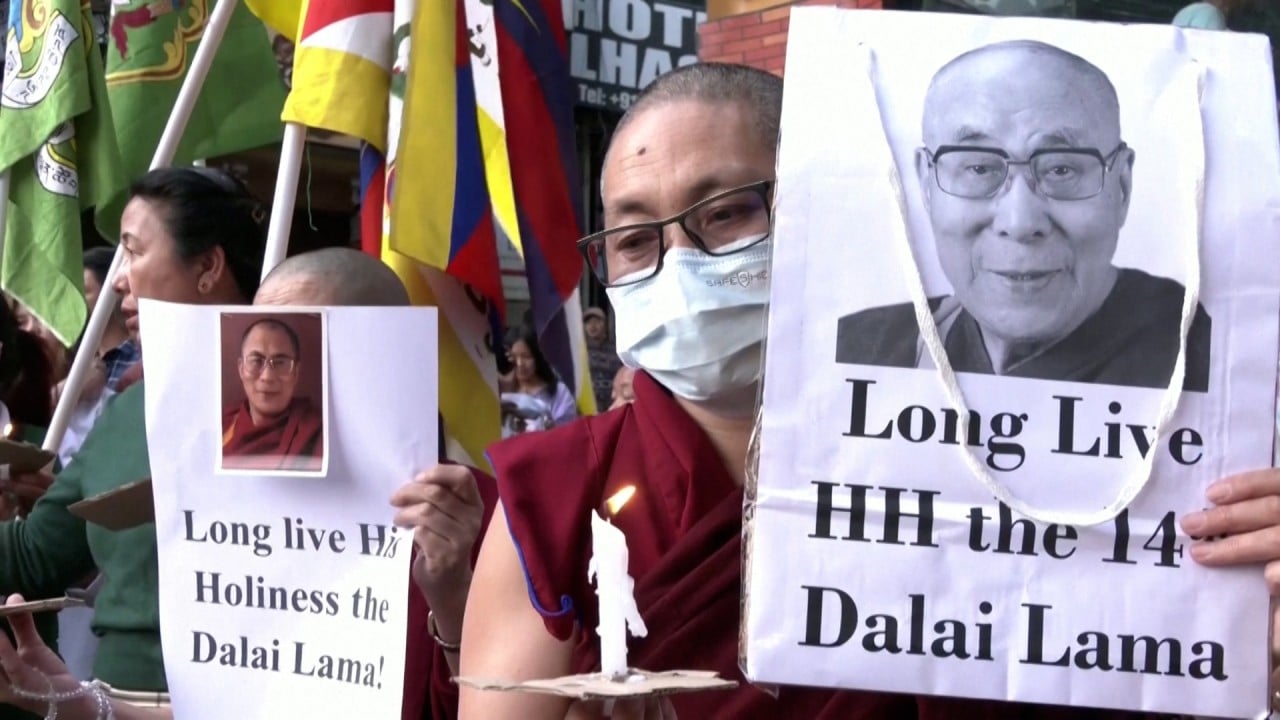“Xizang” is the pinyin, or Chinese romanisation, of the Mandarin script for “Tibet”.
Since the release of the November white paper, “Xizang” has largely replaced “Tibet” in several official Chinese media reports, with “Tibet” now used only in a few scenarios, including translations of already established geographical terms and names of institutions.
But before that, through 2023 up to November 10, search results on Xinhua’s English website showed more than 700 results with the word “Tibet”, suggesting that the term was used in a variety of scenarios, including political and economic coverage, while “Xizang” appeared only around 30 times.
Likewise, before November 10, the English website of People’s Daily, the party’s mouthpiece, used both “Xizang” and “Tibet”, with the former appearing less than one-fifth as often as the latter. But from the release of the white paper until Friday, “Tibet” appeared only only in one reposted article from another media outlet and in scenarios where English translations were already fixed, such as the Qinghai-Tibet Plateau and Tibet University, while “Xizang” was used more than four times as often as “Tibet”.
China Daily, the English-language mouthpiece newspaper, used “Xizang” along similar lines to the two media outlets after November 10.
Experts say the change reflects Beijing’s emphasis on the sovereignty of Tibet and its efforts to exercise discourse power, but it is likely to have little impact on how the international community refers to the region.
Tibet was incorporated by China in 1950, a year after the Communist Party won the civil war. The Dalai Lama fled to India in 1959 and remains Tibet’s spiritual leader in exile.
Chinese academics want Tibet to be known as Xizang to help ‘reconstruct’ image
Chinese academics want Tibet to be known as Xizang to help ‘reconstruct’ image
The Tibet autonomous region is home to 3½ million people and will be the focus of international attention after death of the Dalai Lama, now 88, and the search for his successor.
The Dalai Lama has said he will address the question of his reincarnation when he turns 90, but Beijing insists it has jurisdiction over the matter.
Also in August, the United Front Work Department, which deals with non-party individuals and groups inside and outside China, said on its WeChat account that the term “Tibet” was misleading to the international community because it could be confused with the Dalai Lama’s term “Greater Tibet”, which encompasses areas in provinces neighbouring Tibet, including Sichuan, Yunnan, Qinghai and Gansu.
The moves by China’s media come as Beijing seeks to foster what Xi has called a “sense of community for the Chinese nation”. This is intended to strengthen national identity in ethnic minority regions, and one way to achieve this is to promote what Beijing calls “standard spoken and written Chinese” – Mandarin.
Barry Sautman, an emeritus professor at the Hong Kong University of Science and Technology, said the change had little to do with ethnicity.
“The Chinese government’s change in Tibet’s English name does not reflect a stance on ethnicity but on sovereignty,” he said.
“It is to vindicate the sovereign right to use a term derived from China’s official language for a part of China’s territory.”
Robert Barnett, a professor and senior research fellow at SOAS University of London who specialises in contemporary Tibetan history and culture, said the attempt to change Tibet’s English name was part of Beijing’s policy drive to exercise its “discourse power” by “insisting on Chinese terms and frameworks” in media discussions.
Barnett also stressed that the term “Xizang” might not be popular outside China.
Most places in China are referred to in English by the pinyin of Chinese characters, but the minority language pronunciation or internationally known names are also used in some ethnic minority regions.
This scenario includes the use of the Inner Mongolia autonomous region instead of the pinyin, Nei Menggu, and Urumqi and Kashgar, instead of Wulumuqi and Kashi in pinyin, for the cities in the Xinjiang Uygur autonomous region.








